
Mountaineering
BeginnerHiking
BeginnerRock Climbing
BeginnerIce Climbing
BeginnerBackcountry Skiing
BeginnerMountain Planet
12 years, Australia
How Much Money Mountain Guides Earn or Why Guides are Like Whiskey
How much money do mountain guides make, how many types of mountain guides are there, how to tell one type from another, and why do they have so much in common with whiskey?
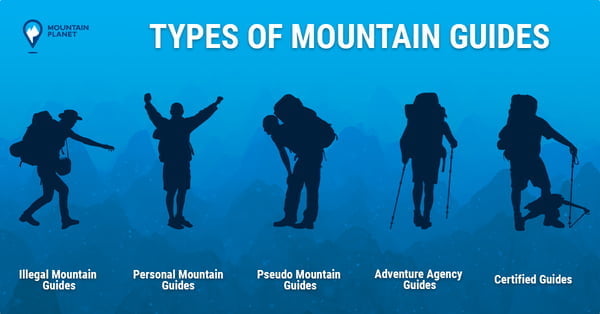
1. Pseudo Mountain Guides
One of the lowest-paid categories of so-called mountain and outdoor adventure guides is porters and mountain companions, who are hired on site. “Mountain companions” have been around since Adam was a boy but in the countries with a highly developed mountain infrastructure they are now few and far between — thanks to the development of technology, in a number of regions this profession simply ceased to exist.
However, porters can still be found in Nepal, South America, India, Pakistan, Tibet, Tanzania and other popular tourist destinations. As a rule, what such mountain companions do is simply carry around the things of outdoor enthusiasts on easy trekking routes, making from $3 to $15 a day. Occasionally, they do perform the functions of a guide, talking about the surrounding nature and the weather, as well as sharing simple tips on how to behave in the mountains. You shouldn’t expect, however, that such a guide will be able to provide you with qualified assistance in terms of choosing the route strategy, tactics, first aid or rescue.
In Africa’s Kilimanjaro, the services of ordinary guides cost an average of $50-70 per working week. A senior guide is, of course, paid better than the rest. A porter can make from $3 to $5 a day for accompanying a traveler along the route — and often this amount comes only from the tips.
However, the presence of a local climbing guide is, first of all, the mandatory condition for ascending the mountain (for example, at Kilimanjaro). Second, it is a serious income item for the country and personally for the local guides working in the developing regions.
Photo by Alisa Ivanitskaya (during Kilimanjaro ascent).
What is remarkable is the fact that sometimes the job of the guides is done not only by porters but even by… the local chefs! There is a known case when an expedition to climb Mount Everest was headed by a local chef (still more experienced than the thrifty mountaineers who were on the mountain for the first time, having bought a minimum service package for about $15,000).
In such situations it sometimes turns out that the clients themselves are ready to trust the chef or the porter with the functions of a guide — due to the lack of their own climbing experience on this specific mountain and greater experience of the local guides. On the one hand, yes, this is not the first time around that such a chef is taking part in the ascent, and he does have certain skills and competences. But we will have to remind you yet again that such a person will not be able to provide you with qualified assistance during the climbing. And if the situation becomes critical you should not count on his help.
A tragic example confirming this rule is the fatal incident of the solo-climber David Sharp, who died near the summit of Mount Everest in 2006. Nobody was able to give him any help at the critical moment, and the British climber froze to death at an altitude of 8500 meters.
More on the situation of David Sharpe is available here; the accident is commented on by the founder of Mountainplanet.com Sergey Kofanov (twice ascender and participant of rescue operations on Everest).
In any case, when making the decision to use the services of a surrogate guide who miraculously transformed into one from a simple porter, you must bear in mind that you are working with an amateur (although the latter may indeed have some skills and experience). As far as the right way of acclimatizing or learning the technique of climbing in crampons is concerned, he will hardly be of any help. So think twice about your health and safety.
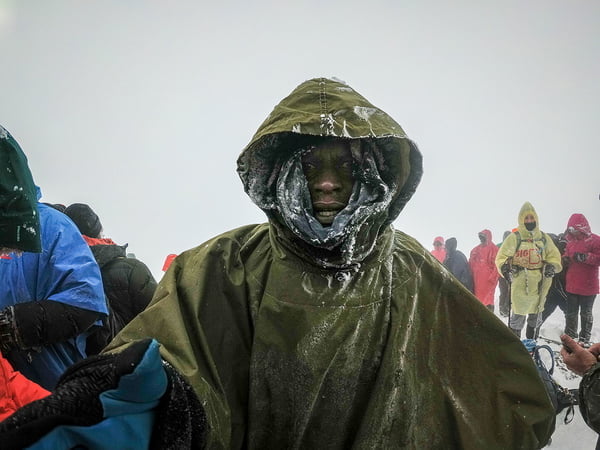
2. Personal Mountain Guides
Valery Babanov, a double winner of the most prestigious mountaineering award “The Golden Ice Axe”
Personal guides are former athletes or world-renowned climbers who achieved outstanding success in the mountains and boast an abundance of various awards, records and achievements (including the legendary “Golden Ice Axe”).
As a rule, during his long (15-20 years) career, such a guide has conquered all the 7 summits of the world, and a number other equally famous mountains.
Such people are few and far between, and, if you want to become their client, you need to plan your trip at least a year in advance and be ready to pay really well for such guide’s services. The upside to it is the fact that such a guide will take you wherever you want to go — Mount Everest, Kilimanjaro, or even the active volcano Cotopaxi in Ecuador. And, as a bonus, he will pass on to you his invaluable climbing knowledge and experience.
On the other hand, the price of hiring such a guide can vary from 350 Euros a day (friendship price) to a few thousands or even tens of thousands of dollars for a trip — depending upon the guide’s reputation capital, the client’s solvency and the chosen route.

Valery Babanov
Climber and a mountain guide, graduated from the ENSA school. A double winner of the most prestigious mountaineering award “The Golden Ice Axe” (for climbing the peaks of Meru and Nuptse)
The guide’s orders must be obeyed without a word. The guide must be firm in his decisions, and he must establish himself with his client: from now on, I am your boss, and you are my subordinate. Although I did have situations when I said to my client, who might have thousands of people under his command back on the ground: it’s time to turn back! And he just stares back at me, like “I don’t want to!” And you have to say: “We have to turn back and descend!”
There were other incidents, and even injuries, when I had to call in a helicopter, for example, when one of my clients fell down virtually for no reason and broke her leg… In such situations, the guide must act in a professional manner: there is no one else around to give you a hand! You need to know just what to do, and have all the necessary phone numbers. Therefore, it is very important for the guide to be professionally qualified, and to be aware of all the responsibility that he assumes.
Unfortunately, many people trying to find a “less expensive” guide seem to be oblivious of this. They think, hey, what’s so dangerous about those mountains? No mountain too high! Who cares? I’m going to save up paying half the price, and we’ll make a quick tour of a peak or two! But there are situations when what you need is a qualified guide.
Oliver Stutz
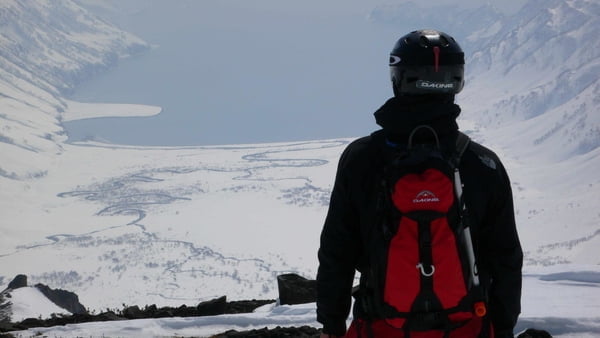
The founder of heliskiing.ru web-project, works with guides on a daily basis in Alaska, Canada and Russia
A high price of personal guide services alone is not a guarantee of high quality service or your absolute safety. But it makes it much easier to organize a good and safe tour.
Concerning mountain guides education: there are very good guides out there who do not have any special education and there are certificated guides, on the other hand, who may lack the required skills.
However, certification is much more in demand in Europe and North America. In Canada, for example, people trust in experience more than in education. You just have to know your mountain!
3. Adventure Agency Guides
Photo by 7summitsclub.com.
An accompanying guide who works for the travel company, through which you arrived for ascending the mountain or trekking in a different country, is in most cases a professional climber (in the past and in the present) who has made quite a few exploits in this area. For him, it is a not only chance to visit his favorite mountains yet again, but also an opportunity to raise some extra money for his own expedition.
Such a mountain guide can make from $3,000 to $5,000 per trip but sometimes this figure soars dramatically. For example, the famous Soviet mountaineer Anatoly Bukreev, who saved three people during the 1996 incident on Mount Everest (well-known by the film of the same name that was released in 2015) asked the organizer of the expedition, Scott Fisher, for a whopping reward of $25,000. The latter did pay the price but we cannot say whether he regretted it or not: Fisher died next to the peak, never learning about Bukreev’s heroic deed. Bukreev perished a year and a half later — also in the Himalayas, on Annapurna.
Speaking of guides, we cannot omit mentioning the legendary Sherpa People living in Nepal. Alongside with professional guides, the climbing Sherpas take part in challenging ascents of eight-thousanders, risking their lives to ensure the client’s safety.
On average, they make from $30 a day, or about $5,000 per season (usually making one ascent a year to Mount Everest or another eight-thousander). Their hard labor is also rewarded with a $500 to $1,000 extra tip, the so-called Summit Bonus which they are paid upon the successful completion of the ascent.
The mountain guide who manages all the other Sherpas in a climbing expedition or trekking group — Sirdar — gets $5,000 or more for an expedition. The Sirdar’s commitments include assigning responsibilities to the other guides, hiring and paying local porters, and making the final decisions regarding route choices together with the head of the expedition. This is a very respected and rare profession; there are only a few dozens of such practicing professionals in the world.
Real Climbing Sherpas on "Everest" movie set. Photo by IMDB.com.
The work of Sherpas is rewarded particularly well at the Khumbu Icefall — one of the most dangerous places on the route of ascending Mount Everest though the South Col. The glacier is in constant motion: sometimes it is fatally dangerous (on 18 April 2014, an ice avalanche killed sixteen climbing Sherpas). For this reason, Sherpas charge the expedition extra money for going through the Khumbu Icefall and carrying loads through it (on average, $2,500 from a team or $500 from a climber). The Sherpas who work in this region are called Ice Doctors or Khumbu Doctors which means respect for the complexity of the task that they do on the glacier.
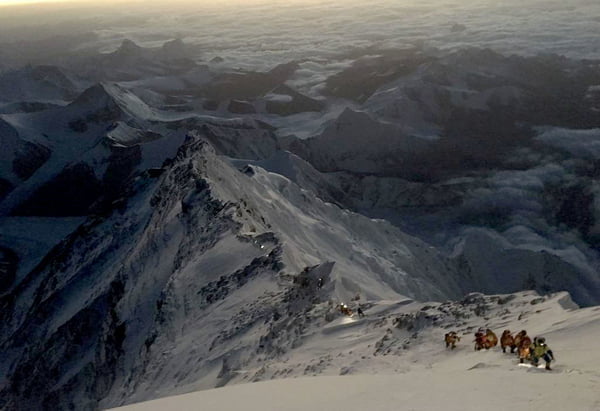
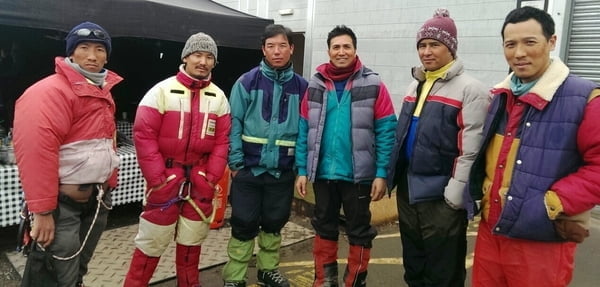
4. Certified Guides
UIAGM/IFMGA cadets training process.
The “blue blood” among the mountain guides are the members of the International Federation of Mountain Guides Associations (UIAGM/IFMGA), as well as a number of national associations. In order to get the UIAGM certificate for general mountaineering, skiing, rock climbing and ice climbing, the cadets study at least five years (and the training costs a pretty penny). On the other hand, the Federation was founded more than 50 years ago, and more than 20 countries became its members.
One of the important questions is why do people spend big money on studying in the UIAGM system: after he or she graduates, the certified guide sells his or her services for about 300 Euros a day. There are no more than 10 000 such certified guides in the world.
For a few years already, UIAGM has been gathering the national associations under its umbrella, implementing its training programs all over the globe. However, you cannot really say that the level of regional training of mountain guides is significantly “worse”: often, the process of admitting a national association to the UIAGM family takes up a few years, so, it can be just a question of time.
How can you tell if the guide whose services you are about to buy is really qualified, got an adequate training, and possesses the necessary skills and experience? There are IT-platforms for mountain guides and their clients where you can not only see the profiles and portfolios of mountain guides in different countries, but also read the reviews written by the climbers who made use of their services.
The experts of Mountain Planet say that this is an important factor boosting the development of the international Alpine Community because in our digital age feedback from the clients becomes a particularly valuable asset. And not only for the guide — his or her portfolio and training background can be quite impressive but you still will not be able to tell just how long this person has been working in the mountains, or what if guide can have one drink too many on the route or can get rude with his clients? This system works both ways: the guide can meet with a client who behaves inadequately in the dangerous conditions on the mountain and can write an unbiased review to warn his colleagues about the downside of working with such a client.
On Mountain Planet, the guides, who are members of the associations in their respective countries, can be distinguished by the Association logo in the upper right corner of the cards list.
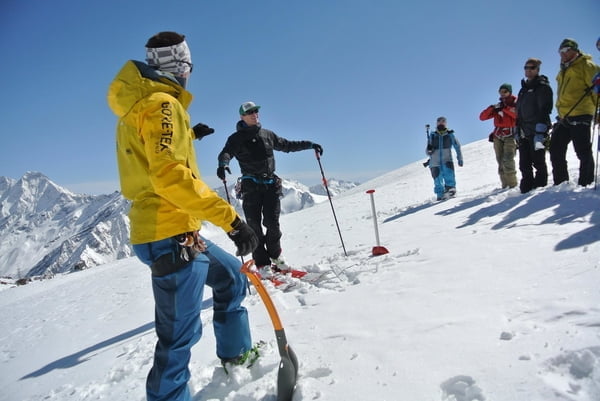

Oliver Stutz
A good guide needs social competence. For many clients he is like a mentor or hero. Many people from Europe are dreaming to be a ski guide or a ski instructor and to get this red uniform.
But there is a big difference between the levels of education. The first level takes up 10 days. Not too difficult if you spent enough money.
More on the most popular mountain guide associations: by the link.
Valery Babanov
I may charge a little more than average for some of my services as a guide but I still try not to “get cheeky”. Because here in Chamonix the competition is tough, and sometimes we have people here who are quite far from professional mountaineering, and they may not know that you are a “mountain star”, may not know about your “Golden Ice Axe” or other climbing achievements.
Still, though, I do have a certain amount of “exclusiveness” about me, so a can raise the bar a bit higher.
5. Illegal Mountain Guides
Photo by Matt Sclarandis on Unsplash.
Pretty often, uncertified mountain guides who peddle their services to clueless tourists (who still want to save on the guide’s services) are called “black” ones, or “working black”. We will not go as far as to draw parallels with the “black widow”: of course, these people do not wish injury or death upon their clients. But in the mountains, things do happen. Tragic cases are known when the climber and his guide died — solely through the fault of the latter.
Let’s be fair: there are quite a lot of professional mountaineers among illegal guides. But there is a reasonable question: any professional sooner or later thinks of improving his or her skills; love for learning and growing is in their blood. And if a “black guide” is not going to sign up for the professional training program or land a job with an agency or take part in a competition, and thus get extra skills, experience, and brownies, then what kind of a professional is he?
You surely will not trust your life to an understudied doctor or to a cab driver whose license has been canceled? So why do you agree to be led into the mountains by God knows who?
There is yet another side of the story: an illegal guide may be someone who is indeed certified as a guide in his home country but who came to work in another country without the official permit (for example, a work Visa). And, while such issues used to be solved within the mountain guide community by means of direct threats in the spirit of “stay out of our mountains along with your clients, or else”, today somebody who is caught in the act of leading whole groups of people (calling these people “friends”, while in reality they are clients), all summer long into the mountains, for example, to Montblanc, can be easily handed over to the police — and then it is a matter for Themis to judge. And she is known to be sometimes really hard on people.
Not really guides, but many ski instructors from the Eastern Europe work illegally in Austria. A legal guide gets around 16 Euro an hour. The office, on the other hand, takes 70-80 Euros from the client.
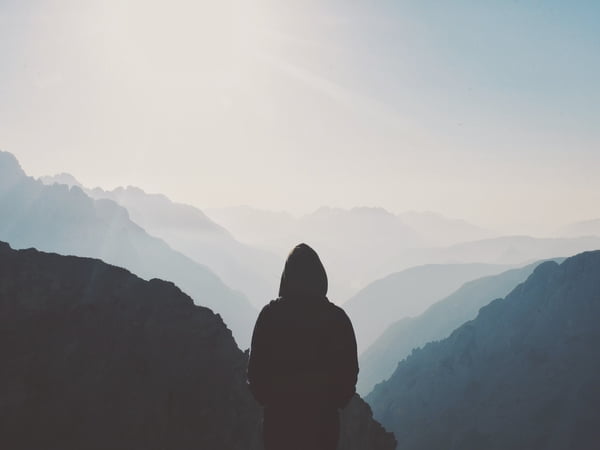
Oliver Stutz
Resume
Do not abuse alcohol, learn new things, improve your climbing skills and join the Alpine Community at Mountainplanet.com. Let’s make mountains safer and accessible together!
***
Mountainplanet.com is a global geo-informational social network which wants to help mountain guides, clients and all outdoor enthusiasts to communicate and locate each other better.
Register on Mountainplanet.com as a guide, outdoor enthusiast or athlete, share your experience and emotions and let’s make the mountains safer and accessible together — for the people who are looking for memorable outdoor experiences.





